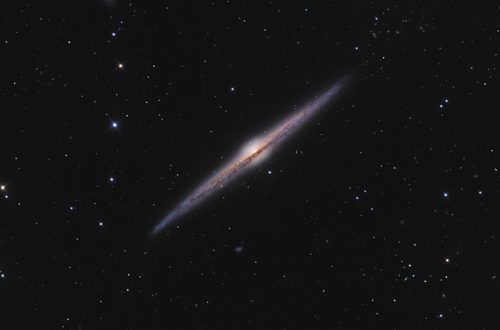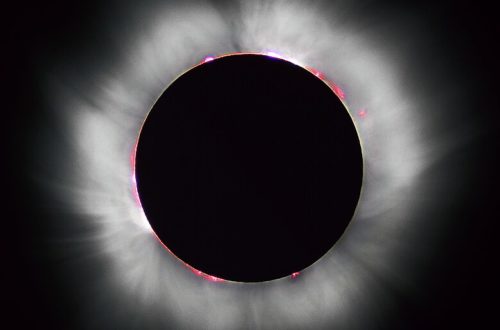The Top 10 Photographs of Celestial Objects

NASA has provided us with stunning photos over the years, featuring everything from stars and planets to nebulae and even distant galaxies, using telescopes here at home as well as probes orbiting our planet and exploring distant corners of the solar system. NASA uses a combination of both visible and invisible wavelengths of light to create images that we can enjoy so we have at least a small idea of what is waiting for us out in the cosmos.
With that in mind, here are our top 10 photographs of celestial objects.
1. Jupiter Abyss
(https://apod.nasa.gov/apod/ap190610.html)
We’re all familiar with the elaborate cloud formations and the big Red Spot that has been present on the surface of Jupiter for millennia. But what about a dark hole in the planet’s atmosphere?
Juno, the probe currently orbiting Jupiter, spotted this dark abyss in the gas giant’s surface during its last pass over the planet. It may be just the center of a storm vortex, or it could be a really deep hole leading farther into the interior of the planet. It’s hard to tell by just looking at the pictures.
2. Sunrise at Copernicus Crater
(https://apod.nasa.gov/apod/ap190530.html)
The moon is on everyone’s mind these days as NASA works feverishly to complete the preparations necessary for the Artemis mission that will take astronauts back to the lunar surface by 2024. This stunning photo of sunlight just beginning to strike the Copernicus Crater on the Moon, one of the most prominent impact sites on the satellite’s surface, serves to remind us why we’re trying to get back to the moon.
3. The Cat’s Eye Nebula in Optical and X-Ray
(https://apod.nasa.gov/apod/ap190501.html)
Nebulae create some of the most stunning vistas in the cosmos, glowing brilliant colors and resembling everything from cats’ eyes to lions’ heads. The central star of the Cat’s Eye nebula is dying, which means it’s in the process of shrugging off its outer layers and creating waves of energy that wouldn’t be visible to the naked eye. This image is a combination of optical wavelengths captured by the Hubble Space Telescope and x-ray images captured by the Chandra Observatory.
4. Space Station Silhouette on the Moon
(https://apod.nasa.gov/apod/ap190402.html)
When you look up at the moon, you don’t expect to see a dark spot marring its face. But that’s precisely what this stunning image captures: the International Space Station perfectly silhouetted against a gibbous moon. This photo is an exercise in perfect timing — even if you do see the ISS as it crosses the moon’s surface, it’s moving so fast that it’s only silhouetted for about half a second before vanishing again in the dark night sky.
5. Doomed Star Eta Carinae
(https://apod.nasa.gov/apod/ap190220.html)
Eta Carinae is a massive star that is more than 100 times the size of our sun. It also may be about to explode.
This photo shows that it is the only star to naturally emit LASER light, and it occasionally experiences outbursts that make it the brightest star in the southern sky. It sits in the middle of a unique nebula that is only illuminated by bursts like this, making it look like there are tendrils of red smoke reaching for this dying star. Because of its size, once it finally explodes, it may become one of the brightest supernovas we’ve ever seen — but it could take more than a million years to reach that point.
6. NGC 4565: Galaxy on Edge
(https://apod.nasa.gov/apod/ap190222.html)
Dubbed the Needle Galaxy because we can only view it on its narrow edge profile, NGC 4565 is a beautiful spiral galaxy nearly 40 million lightyears from home. This photo doesn’t just capture NGC 4565’s stunning profile — it also showcases a number of other galaxies in the distance that are even farther away. Unless something dramatic happens, we may never get a better view of the Needle Galaxy.
7. A Rainbow Geminid Meteor
(https://apod.nasa.gov/apod/ap181219.html)
When you see a meteor with the naked eye, it just looks like a flash of white light. But there’s so much more to see, like what this photographer has captured. When the Geminid meteor shower took place, some of them left ionization trails in blues, greens, reds and purples. These colors come from the different ionized elements in the meteor: green from nickel, red from nitrogen and blue-green from magnesium.
8. Ultima and Thule
(https://apod.nasa.gov/apod/ap190103.html)
We used to think that Pluto was the most distant celestial body in the solar system, even if it was downgraded to a dwarf planet in 2006. New Horizons, the probe sent to the edges of the solar system to take pictures of Pluto and its moons, proved us wrong. This photo is of Ultima and Thule — the most distant bodies in the solar system. It looks like one planetoid, but it’s actually two, held together by their mutual gravitational pulls.
9. Phobos: Doomed Moon of Mars
(https://apod.nasa.gov/apod/ap181125.html)
This phenomenal photo features one of Mars‘ moons, Phobos. Mars currently has two moons (Deimos is the other), but it might not stay that way for much longer. Sometime in the next 50 million years, the gravitational forces of the red planet will cause Phobos to break up and crash into the surface of Mars. This false-color image was taken by the Viking 1 mission in 1978, but it’s still regarded as one of the best photos of the Martian moon to date.
10. A Cosmic Rose: The Rosette Nebula in Monoceros
(https://apod.nasa.gov/apod/ap190412.html)
This is probably the most famous photo of any nebula. The Rosette Nebula is roughly 5,000 lightyears away from earth, with its petals serving as a stellar nursery. The stars inside this nebula are only a few million years old — babies, really, when you compare them to even our own home star, which is approaching its 5 billionth birthday.
Look to the Stars
We’ve been looking up at the stars and wondering what’s up there since the beginning of human civilization. These photos give us a glimpse of what is hiding in the black, and something to look forward to as we take the steps necessary to finally become an interstellar species.
Would you like to receive similar articles by email?





